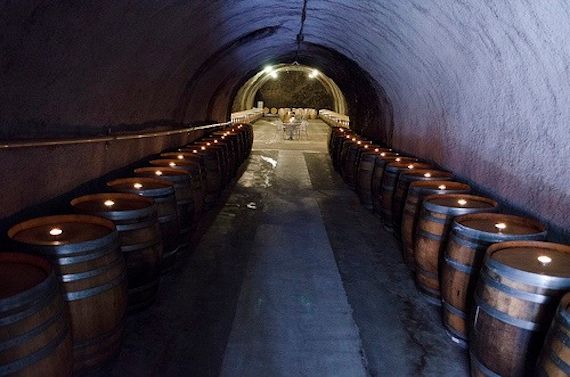As the race to harvest — before the wet, cool fall weather settles into the wine countries of Northern California — continues, another kind of race is happening over in the winery. Fermentation, which tends to take its own sweet time, is being coaxed along by winemakers eager to make room in crowded tanks for those last tons of fruit. As the red wine finishes fermenting, it is pressed off the skins and pumped into barrels where it will spend the next months and maybe even years of its life.
But just which barrel you put the precious juice into is not a decision made on the fly, regardless of how many growers are pounding on the door. Erich Bradley of Repris on Sonoma Valley’s Moon Mountain, who ages each block of his estate vineyard in a barrel selected specifically for that fruit, refers to oak as his “spice rack.”
While the traditional choice for aging fine wine is French oak (from any of the five main forests — each of which have their own character), in the early days of California, redwood was often used, for obvious reasons, to store and age wine (at Simi winery in Healdsburg, you can still see some of these original redwood casks) and some wineries like Regusci in Napa Valley use exclusively American oak. How the barrel is made, whether it is bent by fire or water and how long the barrel is charred over open flame can also affect the wine in profound ways, contributing aromas and flavors ranging from vanilla and baking spices to roasted marshmallow, caramel, popcorn and yes, even wood.
Vincent Darnajou, a second-generation cooper in Bordeaux’s Saint-Emilion region, takes barrel making to another level entirely. While most barrels are made in an assembly-line fashion, Darnajou’s barrels are made from beginning to end by the same person (who then signs it). Will this make wine taste better? Those who are willing to pay hundreds and even thousands of dollars for a single barrel certainly seem to think so.
While the differences tend to be subtle in finished wine — after different blocks and barrels have been blended and the wine has spent some time in bottle —tasting the wine straight from the barrel can give you a pretty good sense of just what is in that spice rack. During barrel tastings, be sure to ask about the grain of the wood, where the forest is and the “toast” or level of char. Oh, and asking where the nearest drain is so you don’t get totally plastered, isn’t a bad idea either.
Much of the inaugural 2011 vintage at Repris is still in barrel
. Tastings, which are by appointment only, can be made by contacting Katie at 707-939-7532 or Katie@repriswines.com
Related Articles
